The dating app landscape has dramatically transformed in 2024, making it easier yet more complex to find genuine connections online. At a time when we are all seeking platforms that align with our values and expectations, it’s crucial to identify which apps truly stand out. This year’s top contenders have emerged due to their unique features and user-centric approaches.
Effortlessly navigating through countless options can feel overwhelming. I’ve invested significant time researching trends, scrutinizing user reviews, and examining privacy measures to bring you the most up-to-date insights on today’s leading dating apps. From popular swiping interfaces to women-empowered environments, these platforms promise robust user experiences while prioritizing data security and authentic interactions. Now let’s dive into the details of each standout app in 2024.
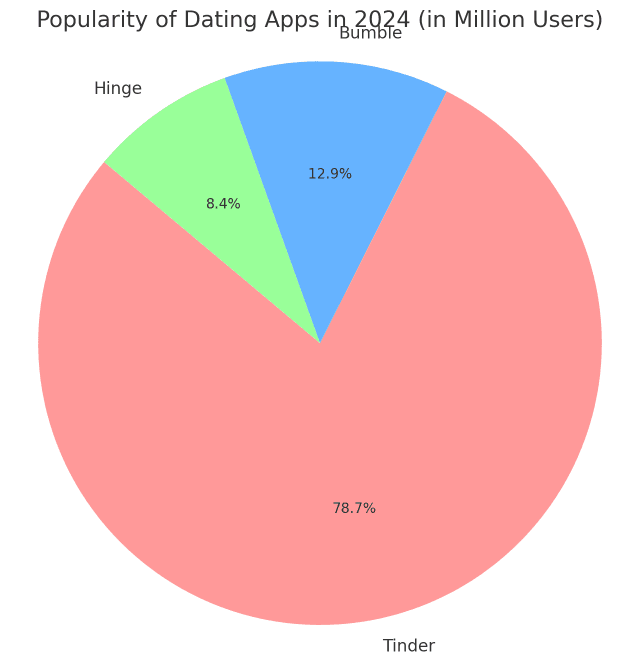
As of 2024, Tinder remains one of the most popular dating apps, known for its wide user base and casual approach to matchmaking. However, platforms like Bumble and Hinge have gained significant traction due to their unique features that cater to users seeking both casual and serious relationships.
Top Dating Apps of 2024(Biggest Brands)
1. Tinder
Known for its signature swipe-based interface, Tinder continues to hold a remarkable position in the dating scene. Its appeal lies with younger users aged 18-24, who appreciate its straightforwardness and expansive user base. We’ve often found ourselves quickly swiping through profiles, revelling in the immediacy it offers.
In 2024, Tinder boasts over 75 million monthly active users around the globe, cementing its status as the app with the largest community of potential matches. The sheer number of users ensures that there’s always someone new to connect with, which is critical for those just starting their dating adventures.
Recent updates have introduced Tinder Explore—a feature that allows users to discover matches based on shared interests, fostering connections that go beyond mere appearances. Coupling this with Video Chat, Tinder aims to enhance safety in online interactions by allowing users to communicate before meeting up.
2. Bumble
Bumble distinctly positions itself as a platform empowering women by allowing them to make the first move. This unique feature has been consistently praised for fostering a more respectful dating environment. Taking the initiative can significantly change someone’s experience in online dating; many appreciate having control over whom they engage with initially.
What we find particularly interesting about Bumble is its versatility. Beyond romantic connections, the app includes modes such as Bumble BFF, designed explicitly for finding friends, and Bumble Bizz, catering to professional networking. This multifaceted approach makes Bumble appealing not just as a dating app but as a tool for broader social interaction.
Currently, Bumble serves over 12.3 million monthly active users, with a considerable portion identifying as women. This gender balance supports a more equitable dynamic, helping to promote positive interactions.
3. Hinge
Hinge markets itself quite cleverly as the app “designed to be deleted,” setting its sights primarily on fostering long-term relationships instead of casual flings. We find this mission refreshing, especially when so many apps aim for quick engagement rather than depth.
Innovative elements like engaging prompts and detailed profiles empower users to showcase their personalities effectively. These features resonate with those seeking deeper connections, allowing us to find matches that align more closely with our values and interests.
Since its relaunch, Hinge has experienced an astonishing 400% increase in users, securing its position as a favourite among individuals motivated by serious relationship prospects.
While these three apps lead in general popularity due to their distinct features and broad user bases, other platforms are also making significant strides by utilizing advanced technologies and tailoring their services to meet specific user needs. Up next, we turn our attention to an application known for its classic approach and enduring appeal.
How the Others Fair
Badoo, which has been around since 2006, boasts a larger user base compared to Bumble and Hinge. However, it doesn’t quite match their brand popularity. While Bumble and Hinge cater more to serious dating, casual dating platforms like Badoo often see higher user engagement—proving that “sex sells,” even in the dating world. Personally, I used to use Plenty of Fish (POF) back in the day, but it wasn’t a great experience, and I rarely hear of people using it nowadays.
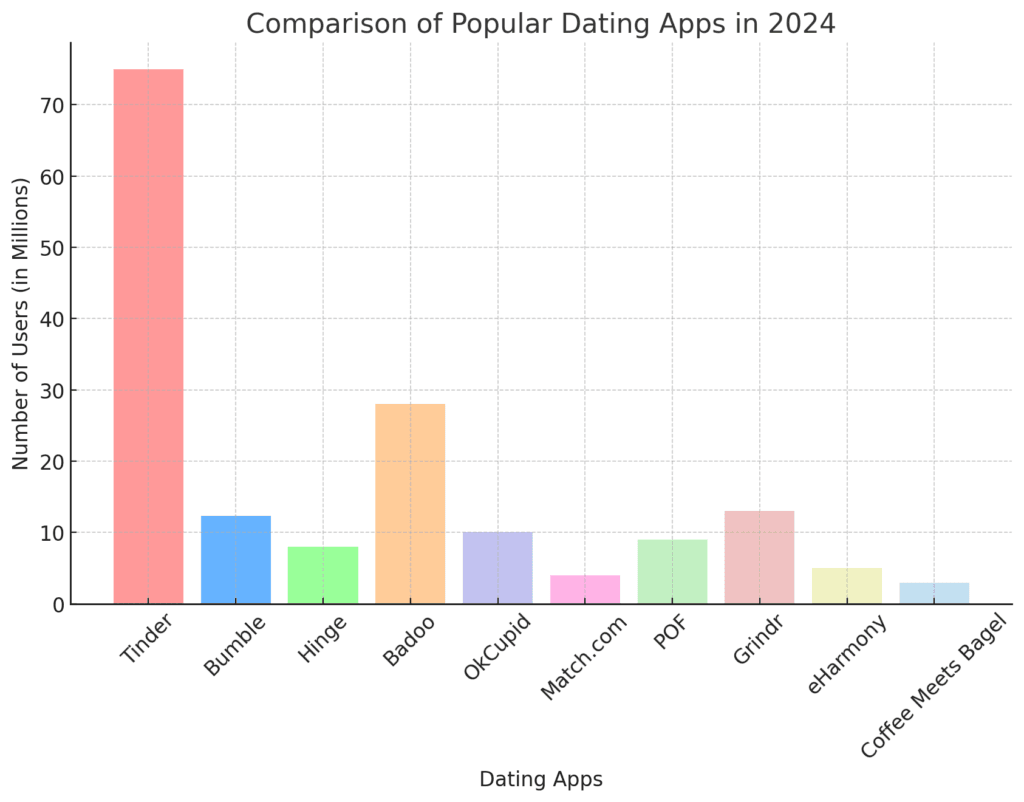
Tinder: The Classic Choice
Launched in 2012, Tinder remains a quintessential dating app, primarily due to its iconic swipe feature that revolutionized the online dating scene. As we navigate through the fast-paced world of modern dating, it’s easy to see why this functionality has become synonymous with our expectations of finding connections. The swipe right for yes and swipe left for no mechanism enables us to quickly assess potential matches, catering perfectly to our desire for speed and efficiency.
Features and Updates
One of the reasons for Tinder’s enduring popularity lies in its suite of features designed to enhance our experience. Premium options like Tinder Gold and Tinder Plus are instrumental in providing us with tools that elevate our matchmaking potential. These features allow unlimited swipes and the ability to see who liked our profile before we swipe, which can make a significant difference in how we approach potential matches. Imagine us scanning through profiles with a sense of control rather than uncertainty—this premium access empowers us.
Additionally, with an astonishing 1.6 billion swipes per day, Tinder isn’t just a staple—it’s the go-to app for quick and straightforward matchmaking. This staggering amount emphasizes not only its widespread appeal but also reflects the high engagement levels within the user community.
User Demographics
It’s particularly noteworthy that approximately 38% of Tinder’s users are aged 16-24, placing it firmly in the hands of younger adults and college students brandishing smartphones. This demographic aspect speaks volumes about Tinder’s branding as a space where light-hearted connections flourish, often leading to casual encounters or friendships rather than serious commitments.
User Reviews
The user feedback around Tinder paints an intriguing picture. For instance, user Amy, 24, notes, “I’ve met quite a few interesting people on Tinder, some of whom have become good friends.” This sentiment is echoed by many who value the platform for its social opportunities. Nevertheless, it’s essential to address criticisms as well. Many reviews highlight frustrations concerning the superficial nature of swiping. We often find ourselves wondering if meaningful connections can truly blossom in such an environment dominated by brief visual impressions.
This contrast leads some users to seek alternatives where women feel more in control, offering a fresh perspective on how digital romance can unfold.
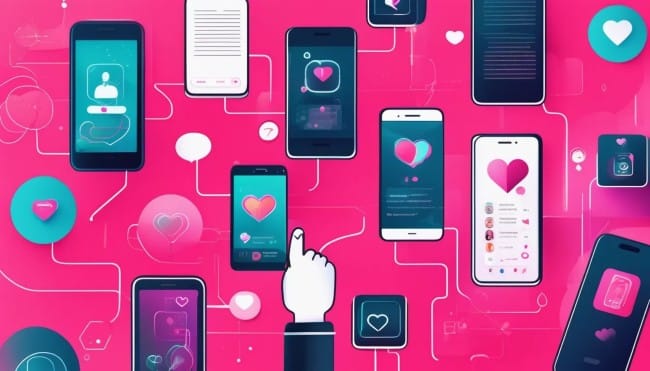
Bumble: Evolving Beyond “Women Make the First Move”
Bumble originally shifted the dynamics of online dating by putting women in control, allowing them to start conversations first. This approach not only enhanced safety but also aimed to empower women by giving them more control over interactions. However, recent changes to the platform reflect a shift in how Bumble balances these dynamics, providing more flexibility for both genders to initiate conversations.
How It Works: Then and Now
Previously, Bumble operated on a clear rule: once a match was made, only women could send the first message within a 24-hour window. This unique functionality encouraged quick engagement and shifted the traditional patterns of dating apps by allowing women to take the lead in starting conversations. Now, Bumble has introduced a new feature called “Opening Moves,” which allows women to set a prompt on their profile for men to respond to, reversing the long-standing requirement that women must initiate the first message. The original approach remains an option for women who prefer to make the first move, but this change offers a middle ground for those who wish to give men the opportunity to reach out first.
Expanding Beyond Dating
Beyond its dating features, Bumble has expanded to meet other relationship needs, such as friendships and professional networking. Bumble BFF caters to those looking to form platonic connections, while Bumble Bizz serves as a platform for professional networking. This multifunctional design allows users to explore various forms of connections in a single, streamlined app.
User Feedback
Users have appreciated Bumble’s evolution. Jess, 29, shares her experience: “Bumble gave me more control over interactions, and the new prompt feature makes it easier to break the ice.” Such feedback highlights how this adjustment resonates with users who value both empowerment and simplicity. The introduction of prompts allows for a quicker connection, whether the woman wants to initiate herself or prefers to let the conversation come to her.
The 24-hour messaging limit, while sometimes seen as a pressure point, still encourages timely and meaningful exchanges. Now, with “Opening Moves,” Bumble maintains a focus on initiating authentic conversations but adapts to users’ varying preferences for who makes the first move.
Popularity and User Trends
Bumble’s approach has earned it a strong reputation, particularly among female users who appreciate the control and safety the platform provides. Over 80% of women have expressed satisfaction with the app’s original feature of letting them make the first move, and the new changes are aimed at keeping this empowerment while easing the pressure on women who may find initiating conversations challenging.
With a focus on flexibility, empowerment, and innovative communication strategies, Bumble continues to redefine how singles connect online. Whether it’s romantic, platonic, or professional, the platform now offers options that cater to diverse preferences and conversation styles. Up next, we explore a platform that targets deeper, more serious connections for those ready to take the next step.
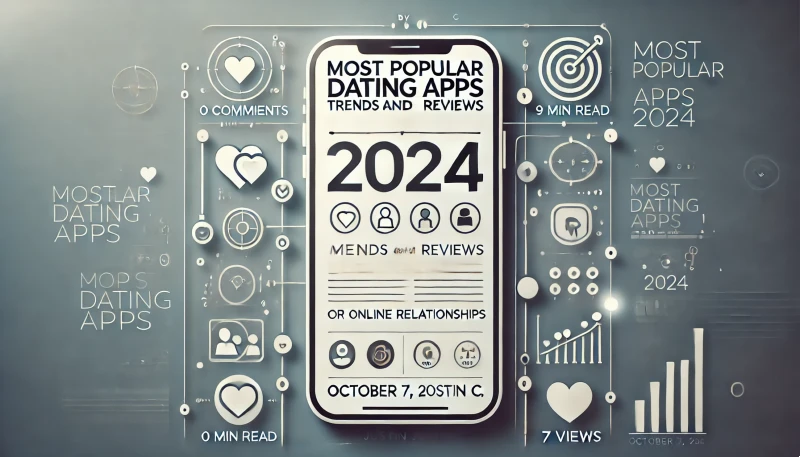
Hinge: Building Relationships
Hinge has tactfully established itself as the app designed to promote genuine relationships rather than fleeting encounters. With its user-friendly interface and engaging prompts, it encourages us to dig deeper into our personalities and experiences. By allowing users to express who they truly are through thoughtful bios, Hinge provides a platform for meaningful connections. It’s refreshing to encounter potential matches who showcase their interests, quirky anecdotes, or personal beliefs rather than merely presenting standard photographs.
Relationship-Centric Features
One of the defining features of Hinge is its thoughtful design centered around relationship-building elements. The app pushes us to go beyond superficial introductions with its innovative prompts. For instance, we can answer questions like “What is your most irrational fear?” or “Tell us your favorite way to spend a Sunday.” Such prompts not only break the ice but also allow us to see compatible traits in others who respond in ways that resonate with us. This creates an interactive experience that sets Hinge apart.
As we navigate through potential matches, we also encounter the “Most Compatible” feature. This match algorithm considers our preferences and past interactions to suggest candidates who align with our ideals for companionship. By using behavioral data insights, Hinge aims to maximize our chances of forming genuine connections based on mutual interests and values.
Success Rates
The statistics surrounding Hinge’s effectiveness speak volumes: approximately three out of four first dates lead to second dates—an impressive figure that suggests a successful matching process. This success rate signifies that many users find what they’re looking for on Hinge, transforming initial connections into long-term relationships. By focusing on compatibility and emotional connection rather than just physical attraction, Hinge enhances the likelihood of a satisfying dating experience.
User Experiences
A testimonial from one of our community members, John, age 32, encapsulates this sentiment perfectly: “I met my fiancé on Hinge. The detailed profiles made it easier to find someone compatible.” Stories like John’s highlight how Hinge’s emphasis on individual personalities fosters deeper connections that evolve beyond digital interaction into meaningful relationships.
While Hinge offers a unique approach to dating through its engaging features and promising success rates, exploring advanced algorithms can provide additional insights into effective matchmaking strategies.
What features are users looking for in a dating app in 2024?
In 2024, users are prioritizing features such as enhanced safety protocols, AI-driven matchmaking, and integrated video chat functions. A recent survey indicated that 85% of users consider safety features like background checks essential when choosing an app, while 78% appreciate personalized matches based on nuanced algorithmic insights. Moreover, the inclusion of virtual interaction tools is becoming crucial as 70% of singles express a preference for video dates over traditional texting to foster deeper connections before meeting in person.
Are there any notable success stories or testimonials from popular dating app users in 2024?
In 2024, success stories from popular dating app users highlight a significant rise in meaningful relationships, with surveys indicating that approximately 30% of couples met through these platforms and are still together after one year. Notable testimonials feature couples like Jack and Lisa, who found love on an innovative app tailored for shared interests, emphasizing the effectiveness of niche dating platforms. With an increase in focused matching algorithms, users report higher satisfaction rates and more compatibility, showcasing how technology is shaping modern romance.
How do new dating apps differentiate themselves from established competitors?
New dating apps differentiate themselves from established competitors by focusing on niche markets, unique user experience, and innovative features such as AI-driven matchmaking or video profiles. For instance, some apps cater specifically to certain demographics like LGBTQ+ individuals or pet lovers, creating a more tailored experience. According to a 2023 survey, around 40% of users expressed interest in using apps that offer specialized matching criteria relevant to their interests, which shows the growing demand for personalized dating experiences over generic platforms.
What demographic trends are influencing the popularity of dating apps this year?
In 2024, the popularity of dating apps is heavily influenced by the growing acceptance of virtual relationships among younger demographics, particularly Gen Z and Millennials, who are increasingly using these platforms for both casual and serious connections. Statistics indicate that over 70% of singles in these age groups reported using dating apps as their primary method for meeting new partners, up from 60% in 2022. Additionally, an increasing number of niche dating apps catering to specific interests, identities, and lifestyles are flourishing, reflecting a desire for more personalized and meaningful connections in a digital landscape.
How has the COVID-19 pandemic impacted user behavior on dating apps?
The COVID-19 pandemic significantly reshaped user behavior on dating apps, leading to a 70% increase in users engaging in virtual dates and video calls as they sought connections while maintaining social distance. This shift revealed a preference for deeper conversations over casual meet-ups, with many users reporting that more meaningful interactions improved their overall dating experience. In fact, a survey conducted in late 2020 found that 60% of online daters felt more comfortable taking things slowly, prioritizing emotional connections rather than physical proximity.

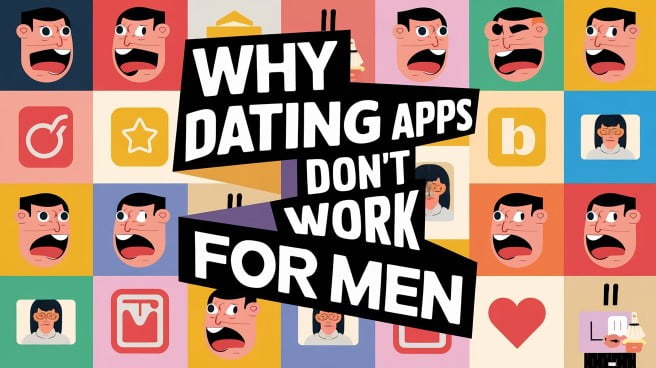
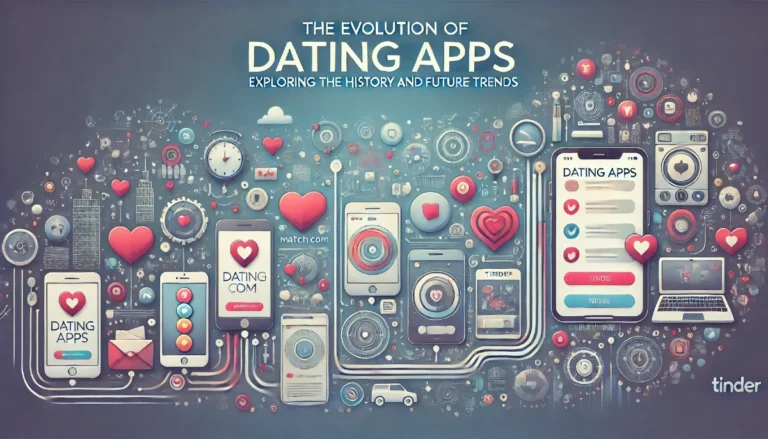
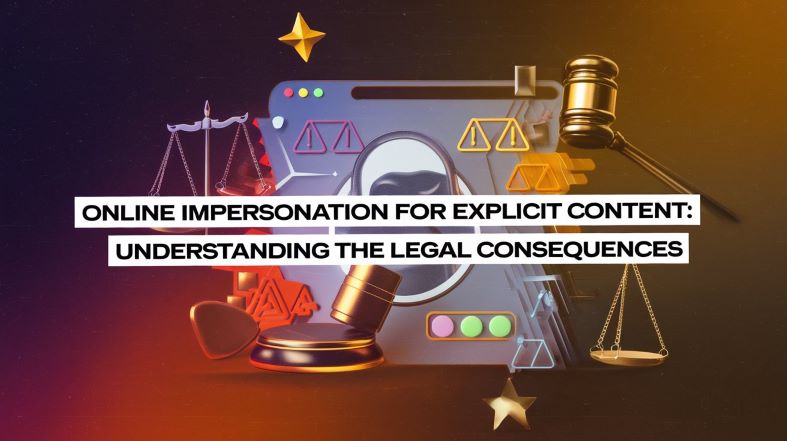
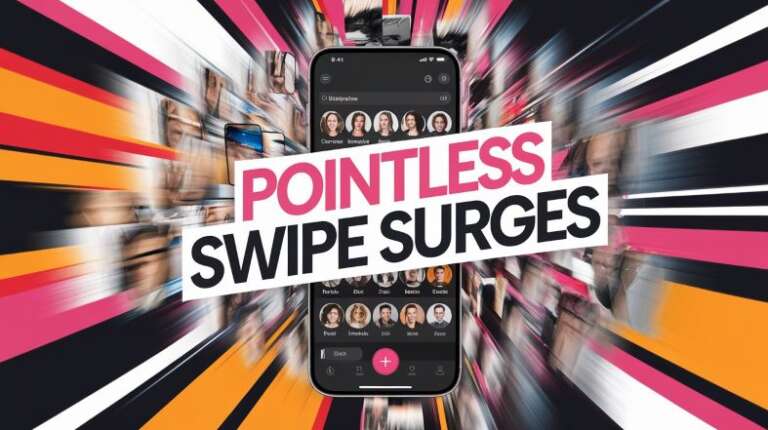


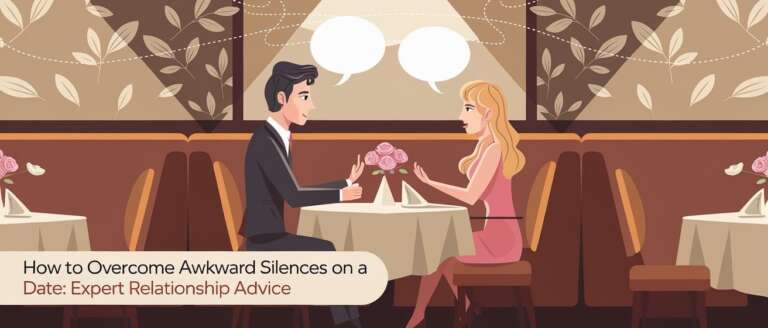
Leave a Comment